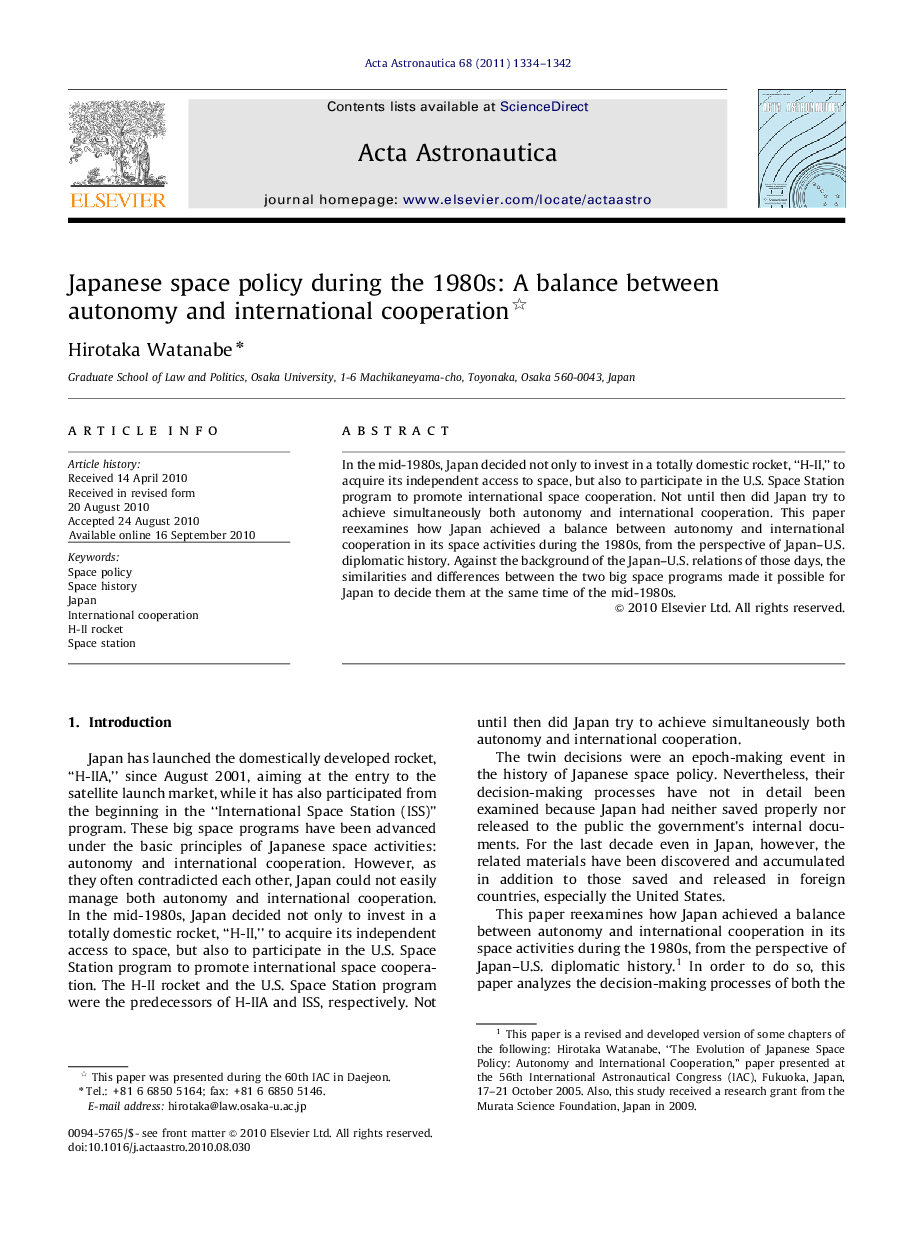| Article ID | Journal | Published Year | Pages | File Type |
|---|---|---|---|---|
| 1715950 | Acta Astronautica | 2011 | 9 Pages |
Abstract
In the mid-1980s, Japan decided not only to invest in a totally domestic rocket, “H-II,” to acquire its independent access to space, but also to participate in the U.S. Space Station program to promote international space cooperation. Not until then did Japan try to achieve simultaneously both autonomy and international cooperation. This paper reexamines how Japan achieved a balance between autonomy and international cooperation in its space activities during the 1980s, from the perspective of Japan–U.S. diplomatic history. Against the background of the Japan–U.S. relations of those days, the similarities and differences between the two big space programs made it possible for Japan to decide them at the same time of the mid-1980s.
Related Topics
Physical Sciences and Engineering
Engineering
Aerospace Engineering
Authors
Hirotaka Watanabe,
